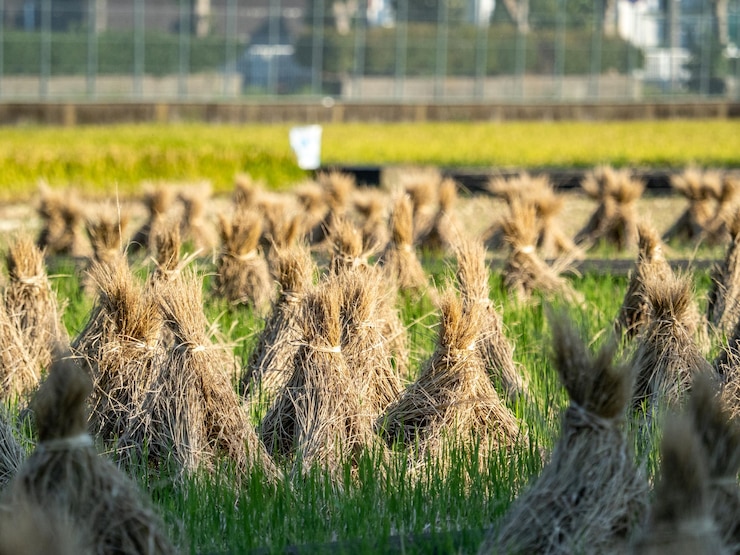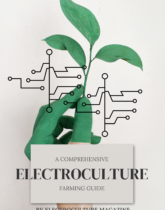In this article, we will explore the concept of subsistence farming, including its definition, key characteristics, and interesting facts related to this agricultural practice. Subsistence farming refers to a method of agriculture in which individuals or families grow crops and raise livestock primarily to meet their own consumption needs, rather than for commercial purposes.
Subsistence farming is prevalent in many parts of the world, especially in rural communities where access to modern farming techniques and infrastructure is limited. It plays a vital role in ensuring food security and self-sufficiency for millions of people, allowing them to rely on their own resources and reduce dependence on external sources for sustenance.
Characteristics of subsistence farming include small-scale operations, diverse crop cultivation, and the use of traditional agricultural methods. Subsistence farmers often grow a variety of crops, including staple crops such as grains, vegetables, and fruits, as well as raising livestock for meat, milk, and other animal products.
Despite its challenges, subsistence farming offers numerous advantages. It promotes sustainable agricultural practices, as subsistence farmers tend to use organic and traditional farming methods that minimize environmental impact. Additionally, subsistence farming helps preserve local cultures and traditional knowledge, contributing to the cultural richness and diversity of communities.
Key Takeaways:
- Subsistence farming involves growing crops and raising livestock for personal consumption rather than for commercial purposes.
- It plays a crucial role in ensuring food security and self-sufficiency, particularly in rural communities with limited access to modern farming techniques.
- Characteristics of subsistence farming include small-scale operations, diverse crop cultivation, and the use of traditional agricultural methods.
- Subsistence farming promotes sustainable practices and contributes to cultural preservation.
- Key challenges faced by subsistence farmers include limited resources, vulnerability to climate change, and lack of access to markets and infrastructure.
The Importance of Subsistence Farming for Self-Sufficiency
In today’s increasingly interconnected world, self-sufficiency is a goal that many individuals and communities strive to achieve. One vital component in realizing this goal is subsistence farming. Subsistence farming plays a critical role in enabling communities to rely on their own resources, ultimately reducing their dependency on external sources for food and other basic needs.

At its core, self-sufficiency refers to the ability to fulfill one’s own needs without relying heavily on external resources. Subsistence farming is a key strategy employed by individuals and communities to achieve this level of self-reliance. By engaging in subsistence farming, people can produce their own food, ensuring a steady and reliable supply to meet their dietary requirements.
Moreover, subsistence farming allows individuals to take control of their own destiny by providing them with autonomy over their food production. Rather than depending on external suppliers, subsistence farmers have the power to determine what crops to grow, how to manage their farms, and what agricultural techniques to employ. This level of autonomy not only empowers individuals but also fosters a stronger sense of community cohesion and resilience.
The significance of subsistence farming in achieving self-sufficiency cannot be overstated. By being able to rely on their own resources, individuals and communities become less susceptible to fluctuations in market conditions, political instability, and natural disasters.
By cultivating their own food, subsistence farmers gain a sense of security and stability. They are no longer solely dependent on external markets, ensuring a consistent food supply even during times of crisis. This level of food security strengthens communities and enhances their overall resilience in the face of adversity.
Furthermore, subsistence farming promotes sustainability by encouraging the use of traditional agricultural practices and methods that prioritize environmental stewardship. Since subsistence farmers rely on their own resources, they have a vested interest in maintaining the long-term health and productivity of their land. This often leads to the adoption of sustainable farming techniques, such as organic farming, crop rotation, and water conservation practices.
In conclusion, subsistence farming plays a crucial role in achieving self-sufficiency. By allowing individuals and communities to rely on their own resources, subsistence farming enhances food security, fosters autonomy, and promotes sustainability. As global challenges continue to arise, the importance of subsistence farming in empowering communities and ensuring their well-being cannot be underestimated.
Characteristics and Practices of Subsistence Farming
In subsistence farming, several key characteristics and practices distinguish it from commercial agriculture. Let’s explore the defining features of subsistence farming and the traditional methods adopted by subsistence farmers.
Small-Scale Nature
One of the primary characteristics of subsistence farming is its small-scale nature. Unlike large commercial farms that focus on maximizing yields and profits, subsistence farmers cultivate smaller plots of land. These farms typically meet the needs of the farmer’s family and local community, rather than producing for a broader market.
Varied Crop Selection
Subsistence farmers engage in diversified cropping practices to ensure a sufficient and diverse food supply for themselves and their communities. They grow a variety of crops, including staple grains like rice, wheat, and maize, along with fruits, vegetables, and legumes. This crop diversity helps minimize the risks associated with crop failure or pest infestations.
Traditional Agricultural Methods
Subsistence farmers often rely on traditional agricultural methods that have been passed down through generations. These methods are tailored to the local environment and utilize natural resources efficiently. Techniques such as intercropping, crop rotation, and agroforestry are commonly employed, enhancing soil fertility, pest control, and long-term sustainability.
Sustainable Approaches

Subsistence farmers typically prioritize sustainable farming practices, as they aim to maintain the productivity of their land for future generations. They prioritize soil conservation, water management, and organic fertilizers, reducing the reliance on synthetic inputs and minimizing environmental impact. By practicing sustainable agriculture, subsistence farmers contribute to the overall health and resilience of their ecosystems.
Subsistence farming is a holistic approach that incorporates the use of traditional knowledge, diverse crops, and sustainable practices, enabling farmers to meet their basic needs while safeguarding the environment.
| Characteristics of Subsistence Farming | Practices in Subsistence Farming |
|---|---|
| Small-scale nature | Diversified cropping |
| Reliance on traditional methods | Sustainable farming approaches |
| Focus on self-sufficiency | Utilization of local resources |
By understanding the characteristics and practices of subsistence farming, we gain valuable insights into the significance of this agriculture model in sustaining local communities, preserving cultural heritage, and promoting environmentally-friendly practices.
The Impact of Subsistence Farming on Communities and Sustainability
Subsistence farming plays a crucial role in shaping local communities and promoting sustainability. Let’s explore how this agricultural practice impacts food security, cultural preservation, and environmental conservation.
Enhancing Food Security
Subsistence farming directly contributes to food security within local communities. By cultivating a wide range of crops, subsistence farmers ensure a diverse and nutritious diet for themselves and their neighbors. This reduces dependency on external food sources and provides a reliable supply of fresh produce throughout the year.
Promoting Cultural Preservation
Subsistence farming is deeply rooted in traditional practices and knowledge passed down through generations. By engaging in subsistence farming, communities preserve their cultural heritage and maintain a profound connection to the land. This not only sustains cultural diversity but also encourages the transfer of valuable agricultural wisdom to future generations.
“Subsistence farming allows us to retain our cultural identity and maintain a strong bond with our ancestors. It keeps our traditions alive and ensures that future generations understand the importance of sustainable agricultural practices.” – Juanita Gonzalez, a subsistence farmer from a rural community.
Contributing to Environmental Conservation
Subsistence farming practices prioritize sustainability and environmental stewardship. These farmers often rely on organic cultivation methods and natural fertilizers, minimizing the use of synthetic chemicals. They also practice crop rotation and regenerative farming techniques, which help maintain soil fertility and prevent soil erosion. By utilizing local resources and prioritizing biodiversity, subsistence farming contributes to the conservation of natural ecosystems.
Challenges and Solutions
Despite its benefits, subsistence farming faces various challenges, such as limited access to capital, land degradation, and climate change impacts. To address these issues, initiatives focused on providing financial support, training in sustainable farming techniques, and access to markets can facilitate the growth and resilience of subsistence farming communities.
| Challenges | Solutions |
|---|---|
| Limited access to capital for investment in farming equipment and infrastructure. | Establishment of microcredit programs and community-driven financing initiatives to provide funds for agricultural development. |
| Land degradation due to unsustainable farming practices and deforestation. | Introduction of agroforestry practices, land restoration techniques, and education on sustainable farming methods to prevent further degradation. |
| Threats posed by climate change, including unpredictable weather patterns and increased pest and disease outbreaks. | Implementation of climate-smart farming practices, such as the use of drought-resistant crops, water conservation methods, and early warning systems. |
By addressing these challenges, subsistence farming can continue to thrive and contribute to community well-being and sustainability.
Conclusion
In conclusion, subsistence farming plays a crucial role in achieving self-sufficiency, sustaining communities, and supporting environmental stewardship. Throughout this article, we have explored the concept of subsistence farming, its key characteristics, and its significance in local communities.
By engaging in subsistence farming, communities can rely on their own resources, reducing dependence on external sources for food and basic needs. This form of farming not only promotes self-sufficiency but also fosters a sense of empowerment and resilience among community members.
Furthermore, subsistence farming contributes to environmental sustainability by employing traditional agricultural practices and sustainable approaches. By cultivating a variety of crops and employing environmentally-friendly methods, subsistence farmers minimize the use of synthetic inputs, conserve natural resources, and promote biodiversity.
Despite the challenges faced by subsistence farmers, such as limited access to resources and unreliable weather conditions, the importance of this agricultural practice cannot be underestimated. As we move towards a more sustainable future, recognizing and supporting subsistence farming can lead to more resilient communities, improved food security, and the conservation of cultural heritage.
FAQ
What is subsistence farming?
Subsistence farming refers to a type of agricultural practice where farmers primarily grow crops and raise livestock to meet the basic needs of their own families or communities. The focus is on producing enough food and resources to sustain themselves rather than for commercial sale or profit.
What are the characteristics of subsistence farming?
Subsistence farming is typically characterized by small-scale operations and the use of traditional farming methods. It often involves the cultivation of a variety of crops and the integration of livestock. This type of farming aims to achieve self-sufficiency and reduce dependence on external sources for food and other essential resources.
How does subsistence farming contribute to self-sufficiency?
Subsistence farming plays a crucial role in promoting self-sufficiency by enabling communities to rely on their own resources. By producing their own food and resources, subsistence farmers reduce their dependence on external markets, transportation, and supply chains. This helps build resilience and stability in local communities.
What are some practices commonly used in subsistence farming?
Subsistence farming often involves the use of traditional and sustainable agricultural practices. These can include crop rotation, terracing, intercropping, and the utilization of organic fertilizers. Subsistence farmers may also prioritize the preservation of indigenous seeds and utilize water conservation techniques to maximize their harvests.
How does subsistence farming impact local communities and sustainability?
Subsistence farming has various positive impacts on local communities and sustainability. It enhances food security by providing a consistent supply of fresh produce and resources within the community. It also promotes cultural preservation by preserving traditional farming techniques and indigenous knowledge. Additionally, subsistence farming is often environmentally friendly, utilizing sustainable practices that respect and protect natural resources.
What are some challenges faced by subsistence farmers?
Subsistence farmers often face challenges such as limited access to modern agricultural technology and markets, climate change impacts, and changes in land availability. They may also encounter difficulties in maintaining the economic viability of their farms and passing down farming knowledge to future generations.
Last update on 2024-07-02 / Affiliate links / Images from Amazon Product Advertising API
















